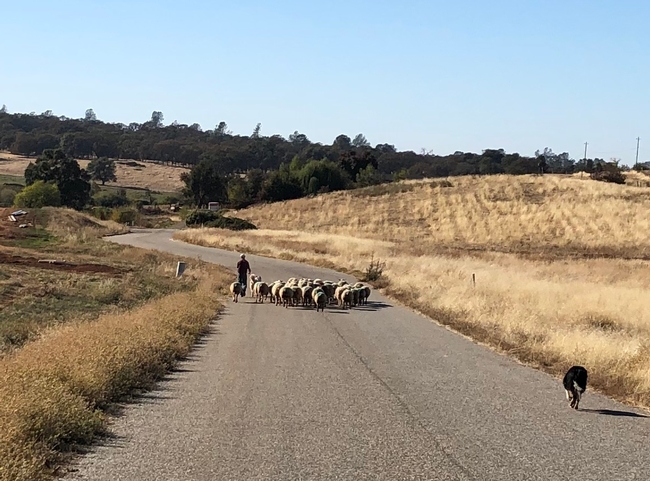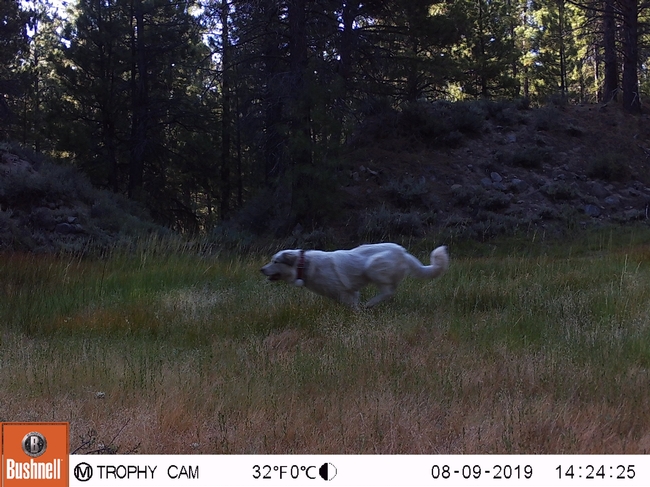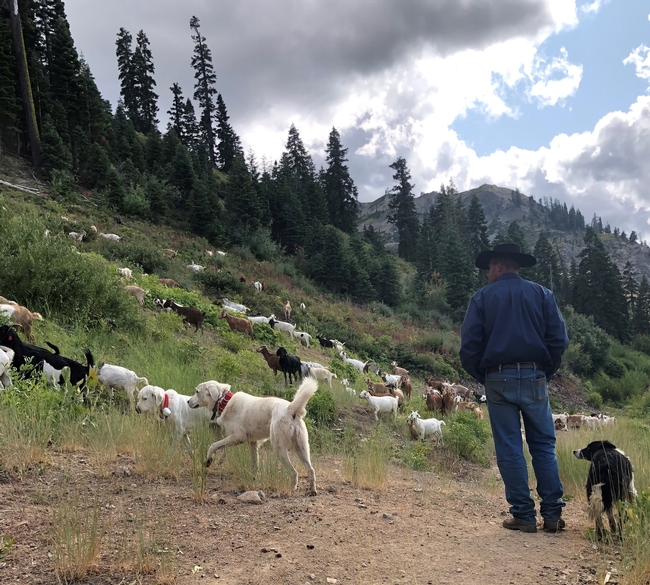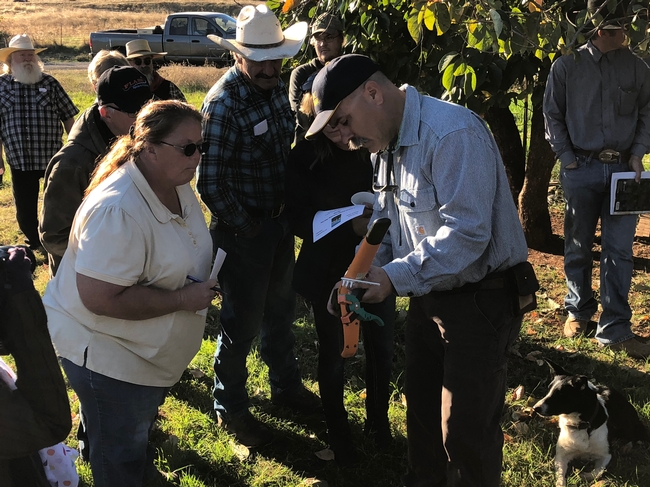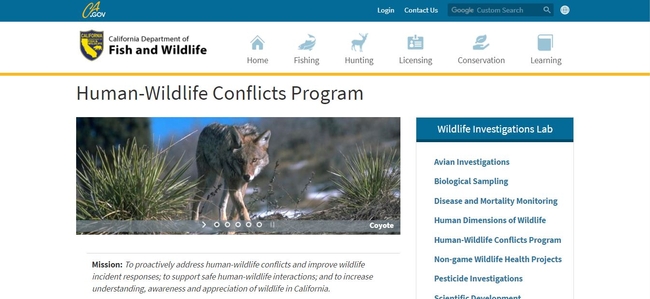- Author: Dan Macon
Last Saturday evening, the Tahoe Cattlemen's Association held it's annual membership dinner. Ranchers from Placer and Nevada Counties sat down to a wonderful tri-tip dinner prepared by the Del Oro High School FFA chapter. But despite the great meal and the enjoyable company, many were understandably concerned about the lack of rainfall. And as with any gathering of ranchers in Northern California this November, drought has begun creeping back into conversations here in the Sierra Foothills. When I jokingly asked who could remember the last time it had rained this fall, there was nervous laughter.
For rangeland livestock producers, drought is a different phenomenon than it is for crop farmers or urban dwellers; the dry spell we've experienced over the last month-and-a-half is no exception. Those of us who graze livestock on annual rangelands in Northern California rely on fall precipitation to germinate our fall/winter forage, and to replenish stock ponds and seasonal creeks for stock water.
This year, some parts of the Sierra foothills received a germinating rain in mid/late September. We actually had green grass on some of the annual rangelands where we graze our sheep near Auburn. Unfortunately, since October 1, we've measured just 0.02 inches of rain here at the UCCE office in Auburn. The warm temperatures and dry north winds we had in October pulled moisture out of the soil; the grass that got started in September has mostly died. PG&E's public safety power shutoffs and an unusually abrupt end to irrigation water deliveries in Placer and Nevada Counties have left many ranchers scrambling to provide drinking water to their livestock.
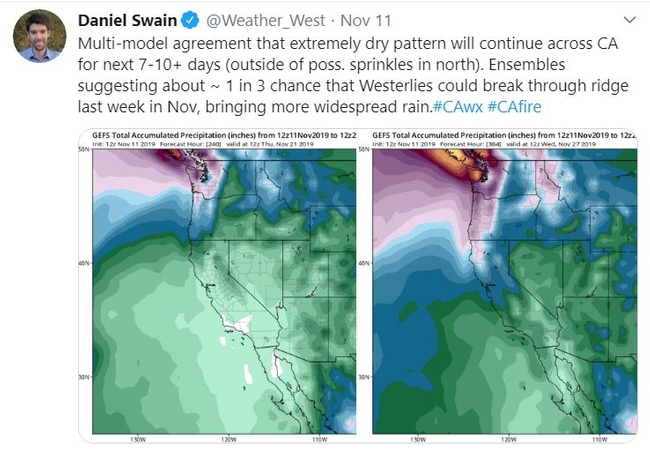
While these forecasts can be depressing, I also know that conditions can change rapidly (and counter to what the weather experts predict). From October 2013 through the end of January 2014, for example, we measured less than 4 inches of rain in Auburn; in February 2014, we received almost 9 inches! More recently, in December 2017 we 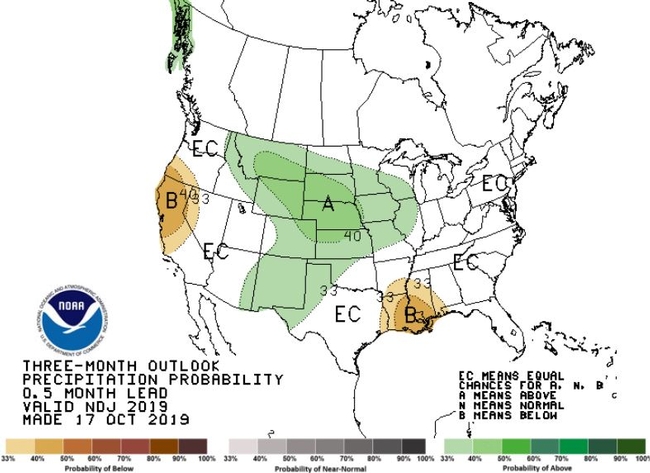
Given the lack of green forage on our annual rangelands at the moment, and the lack of stormy weather on the horizon, what does planning for the worst look like? What actions should we be taking now to reduce the impact of both short-term and long-term drought?
Develop a Forage Budget: Most of us stock our grazing land conservatively - we try to manage our grazing during the spring and summer months to make sure we have fall feed. But do you know how much feed you actually have this fall? Do you know how many days of grazing you have before your fall feed is gone? Since the 2013-14 drought year, we've kept track of our forage supply and demand (or carrying capacity and stocking rate). Rather than use the standard unit of an Animal Unit Month (or AUM, the amount of forage consumed by a 1000-lb cow and her calf in one month), we track sheep days per acre. Granted this measurement is very specific to OUR sheep, but it gives us a useful estimate of our specific supply and demand. In the last two weeks, we've analyzed our winter pastures and determined that without forage growth, and with our current sheep inventory, we'll run out of feed in mid/late January. This is not a happy discovery, obviously, but it does help us focus on our options for addressing this shortfall.
Increase Forage Supply: You may have heard the adage, "Don't feed your way out of a drought" - you may have even heard it from me! And while feeding hay quickly becomes prohibitively expensive, there may be other ways to increase forage supply. In our case this fall, a friend offered us 40 acres of alfalfa stubble for the sheep. Instead of moving to our winter pastures this weekend, we'll save that forage for late December. Other options might be talking with a neighbor about an ungrazed property, or even hauling stockwater to an under-utilized portion of your own ranch. Obviously economics come into play here, too - is hauling water or building fence more expensive than feeding hay? That question will be answered differently for every operation!
Decrease Forage Demand: Selling animals is never an easy decision. One of the most difficult days in the 15 years we've raised sheep commercially was the day in January 2014 when I sorted off bred ewes to haul to the auction - we were out of forage and weren't sure when it would rain again. That said, giving some thought to the animals you could sell - or those you'd keep at all costs - helps make that decision easier. This year, we've prioritized the following animals for sale if the dry weather persists:
- Open/cull ewes
- Older rams
- Excess feeder lambs
- Replacement ewe lambs
- Old/thin bred ewes
Given the cost of hauling sheep to the auction, we want to make sure we have more than one or two; that said, when the sheep come off the alfalfa next month, the cull ewes, older rams, and excess feeder lambs will be sold. We'll save forage for the bred ewes and the replacement ewe lambs.
Selling breeding females is a more difficult decision for us. We can't simply go to the auction when it starts to rain and purchase bred ewes that fit our system and our forage resources; indeed, we're still recovering from selling sheep in 2014. And selling an asset (a ewe lamb or a heifer, for example) means we forego the future income she'd produce. We need to compare the money we'll save in the short term (by not having to buy feed) with the income we'll lose by selling breeding animals. There are a number of more sophisticated economic analysis tools we can use to consider these types of decisions.
Develop Stock Water Infrastructure: Fall stock water is often a limiting factor for many rangeland operations. If ponds haven't filled and creeks aren't running, pastures can't be grazed. While long term solutions (like drilling wells or installing water tanks and troughs) may be expensive and time consuming, short term solutions (like hauling water) may allow us to access additional forage resources. For example, in the winter of 2014-2015, I managed the cattle at the UC Sierra Foothill Research and Extension Center in Browns Valley. As you might recall, that winter was also exceptionally dry. In January, we realized we had more than 20 acres of grass growing along the road system on part of the facility - grass that was outside of our pastures. By hauling water to portable troughs placed on the road, we were able to graze this otherwise unusable forage. And we were able to give the regular pastures a much-needed rest. Hauling water, in other words, bought us time (and forage).
Because ranches are also businesses, we need to consider the financial, economic, and tax consequences of our drought strategies, as well. The UC Rangelands Drought Information Hub has a number of outstanding resources on these topics, as well as links to long-range forecasts. And I'm happy to help you walk through these considerations on your own operation - we can develop a forage budget, talk about water development, and discuss other drought management strategies. In the meantime, remember that staring at your weather app and cursing the weather forecast (as I have done) are not effective drought strategies!
- Author: Dan Macon
When we first started using livestock guardian dogs nearly 15 years ago, I often joked that we our sheep operation was "predator-friendly" because our dogs were not. In other words, the protective behavior of our dogs allowed us to avoid using lethal control on coyotes, mountain lions, and other predators in our environment. And in those 15 years, knock on wood, we've never had to kill a predator. This isn't to say we wouldn't use lethal control if we came upon a predator killing our sheep, but our dogs (for the most part) seem to be doing their jobs.
California now has a predator (the gray wolf) that is protected under both the State and Federal Endangered Species Acts. Under both laws, it is illegal to "harm or harass" a wolf - and lethal control (at least in California) is not an option (even if a wolf is killing livestock). Consequently, the potential interaction between LGDs and wolves takes on new implications - could a rancher whose dog injured (or even killed) a gray wolf be held liable for "taking" an endangered species? Would the California Department of Fish and Wildlife, which recommends LGDs as a non-lethal livestock protection tool in wolf country, actually prosecute such a case?
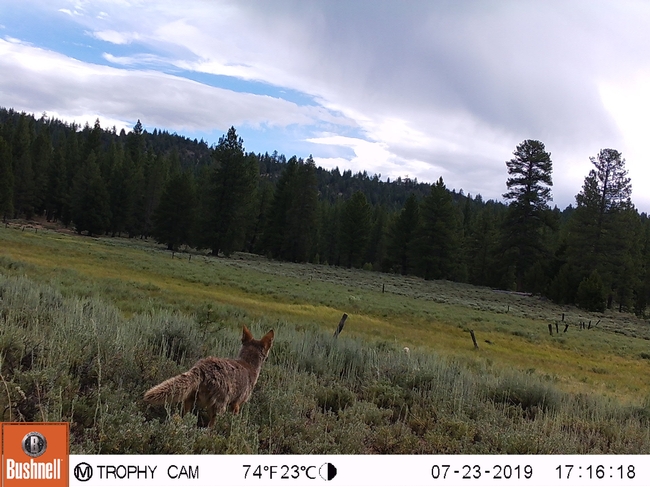
More than two-thirds of these dogs had no reported interactions with wildlife. Of the 71 dogs that did interact with wildlife, 48% interacted with herbivores, while 73% interacted with predators. Just 9% had lethal interactions with herbivores (where the herbivore was killed); 10% had lethal interactions with predators. All of the documented interactions between LGDs and predators (a total of 44 instances) were defensive in nature (in other words, the predator approached the herd and the dog responded). Ultimately, the authors conclude, "Overall, the conservation benefit of LGDs does not appear to be outweighed by ethical implications of their use; LGDs were shown to be highly targeted and discriminatory towards predators attempting to predate on livestock." In other words, the LGDs in this study were effective at deterring predation while minimizing impacts on non-threatening wildlife.
I found this research especially interesting in light of my own observations of our LGDs and the LGDs used by other California operations. I've never witnessed a direct interaction between our dogs and a predator (which is why we're using GPS collars and trail cameras to try to document these encounters). In my 15 years of using these dogs, I've encountered 2 dead raccoons and 2-3 dead jackrabbits in our sheep paddocks, which I assume were killed by our dogs. I have also observed two of our dogs going after an otter (which is a much more vicious predator than I'd realized). I know that our dogs will respond when they hear coyotes howling in the distance, but I've never seen a direct confrontation.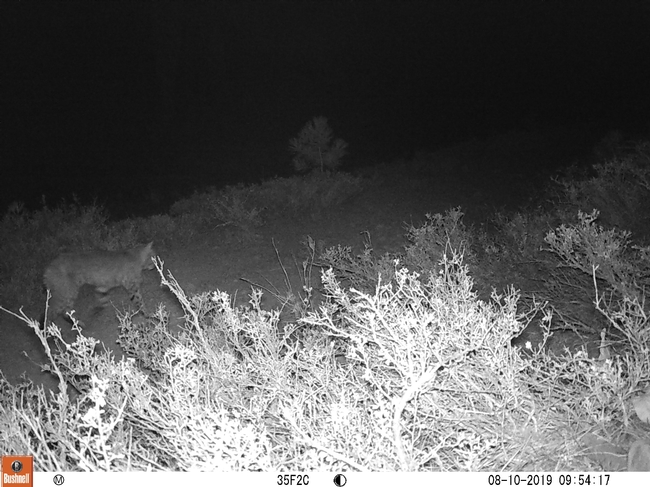
Working with several range sheep operations this summer, I suspect that wildlife encounters may be more common in these unfenced, herded systems. The herders I've worked with report that the dogs are very active at night (as some of my trail cameras and the GPS data suggest).
I'm interested in learning from other producers - how do your LGDs respond to non-threatening wildlife versus predators? What kinds of things do you do to correct inappropriate behaviors? I hope you'll share your insights in the comments to this blog!
- Author: Dan Macon
Several years ago, I started a social media project I called Sheep 365. Every day for a full year, I posted a photo of something we were doing in our sheep operation. At first, I thought it would simply be a fun way to share my shepherding year with friends and family. I soon realized, however, that it could be a reasonably useful educational tool. I found that other small-scale producers were following along and asking questions. More importantly, perhaps, I found that I was able to share the ups and downs of livestock production with a public audience. I could talk about things like losing lambs to pneumonia or the importance of shearing sheep.
Last week, I attended the American Sheep Industry Association annual convention in Scottsdale, Arizona. During the Resource Management Council meeting, we had a lengthy conversation about public misperceptions about livestock guardian dogs. Oftentimes, it seems, the public doesn't understand the concept of a working dog - dogs are pets, and pets shouldn't sleep outside (or even be outside at all in inclement weather). These misperceptions could jeopardize our use of LGDs.
At the same time, I often get questions from producers who haven't used livestock guardian dogs. Where do I find a good dog? Should I buy an adult dog or a puppy? How do I make sure my dog will stay with my livestock? Will my liability insurance go up? How many dogs do I need?
Beginning on February 1, 2020, I am embarking on new social media project - 52 Weeks of Livestock Guardian Dogs. At least once a week for the coming year, I'll post something about livestock guardian dogs on my social media accounts (on Facebook at https://www.facebook.com/FoothillSustainableRanching/, on my Instagram feed - @flyingmule, and on my Twitter feed - Sheepherder Scientist - @flyingmulefarm). Some of these posts will feature my own dogs; others will discuss the ways in which LGDs are used in other operations. There is also a significant and growing body of research about these dogs, which I hope to share during the course this project. Once a month, I'll also devote a blog post to the topic.
Speaking of research, empirical research regarding the effectiveness of LGDs is difficult to conduct. There are so many variables - the breed, age, sex, and reproductive status of the dogs; the environment they're working in; the predators in that environment and their dietary preferences; the time of year and stage of production - in other words, the answer to most research questions about LGDs seems to be, "It depends." For that reason, I also hope to start documenting case studies about LGDs in a variety of settings. These may not provide empirical data, but I hope they capture the range of uses and successes/failures inherent in using any livestock protection tool. I hope they'll provide producers with useful information!
In the meantime, I hope you'll share your questions - and your observations - about these dogs! Post your comments to this blog below, or post questions and comments on any of my social media accounts!
- Author: Dan Macon
Mark your calendar! We have a number of outstanding workshops already booked for 2020! More details will follow in the coming weeks!
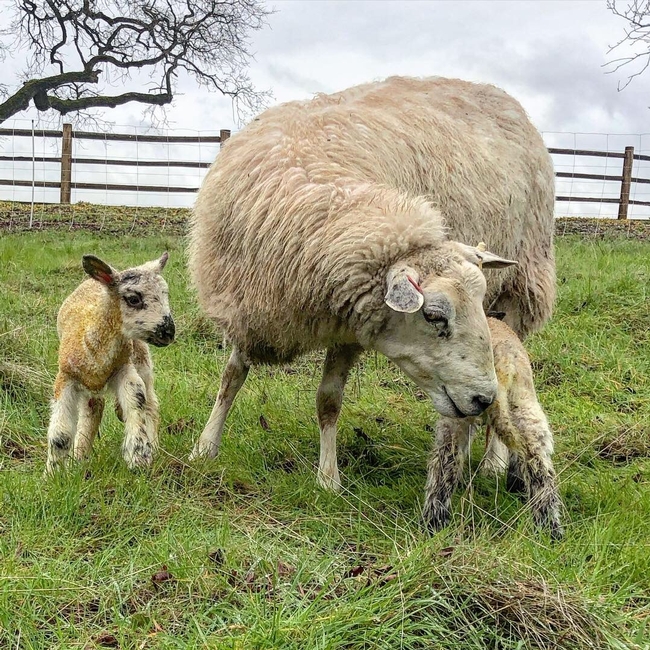
PRESCRIBED FIRE ON PRIVATE LANDS (March 26 - Auburn, CA): This one-day workshop will feature information on fire terms and behavior, permitting and legal considerations, and CalFire's Vegetation Management Program. For more information, go to https://ucanr.edu/sites/forestry/files/318840.pdf.
DROUGHT PLANNING FOR RANCHERS (March 31 - Yuba City, CA; April 1 - Grass Valley, CA): Learn about the strategies and drought adaptation tools that helped California ranchers survive the historic 2012-2015 drought. We'll present information about tools for improving your ability to adapt to an increasingly variable climate.
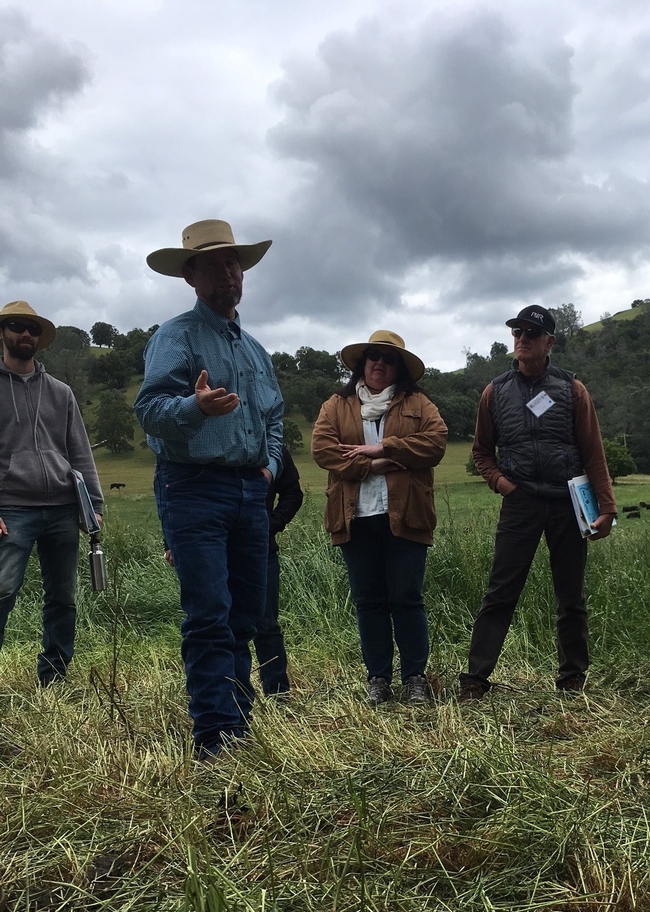
CALIFORNIA TARGETED GRAZING ACADEMY (September 18-19 - Auburn, CA): This 2-day academy will combine hands-on learning about targeting specific vegetation management goals using sheep and goats with an overview of the business basics of contract targeted grazing.
For more details, including registration information, go to the Placer-Nevada-Sutter-Yuba Livestock and Natural Resources Homepage at https://ucanr.edu/sites/Livestock/
- Author: Dan Macon
Given the nature of rangeland livestock production in California, some conflict with wildlife is probably inevitable. In our part of the Sierra Nevada and Sacramento Valley, grazing livestock and wildlife (including a number of predators) often occupy the same landscapes. Private ranch lands and public grazing lands alike provide important habitat for a wide variety of game and nongame species.
In recognition of the potential for conflicts between human activities and wildlife, the California Department of Fish and Wildlife has launched a new website focused on reducing these conflicts. Managed by the Wildlife Investigations Lab, this new resource includes information on a dealing with wildlife problems in urban, suburban, and rural settings.
Here's a link: CDFW Human-Wildlife Conflicts Program


